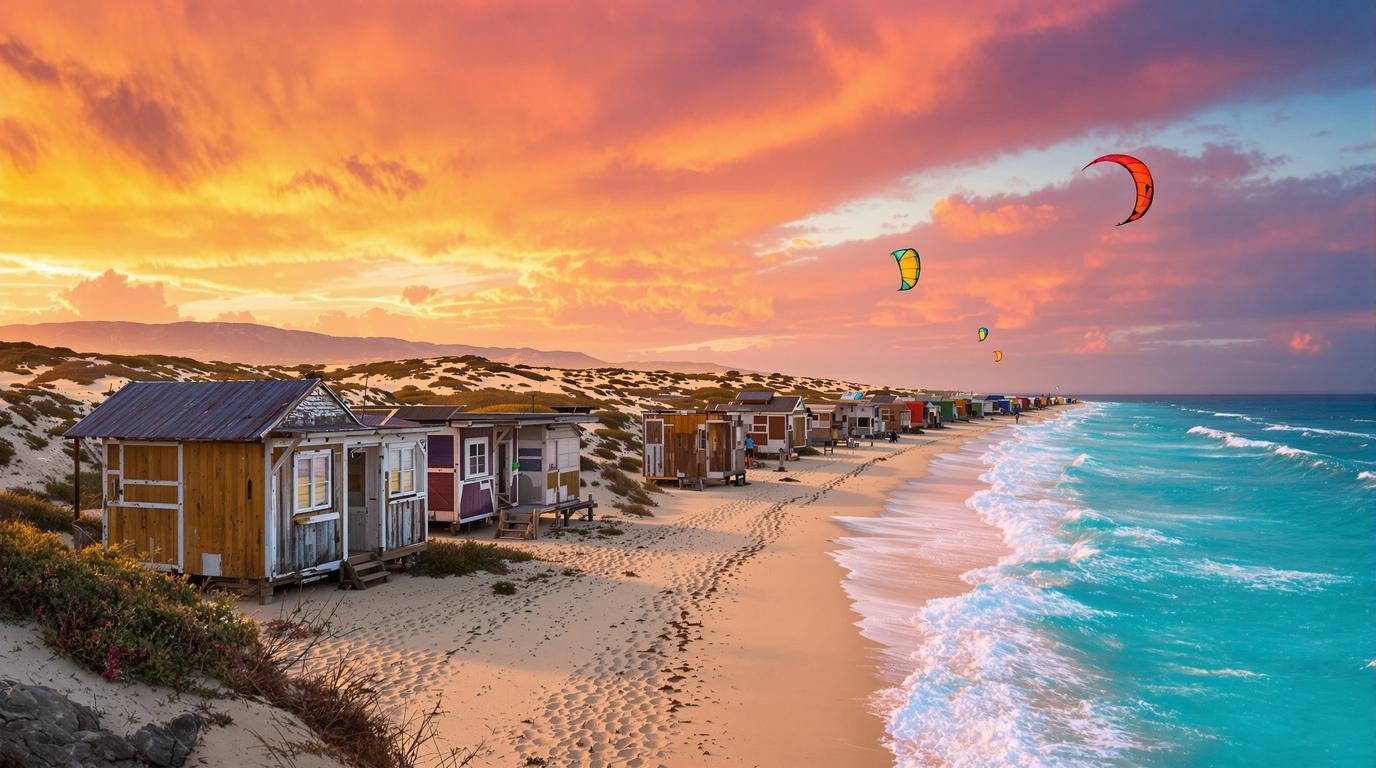This wild French beach feels like the end of the world—and that’s exactly its charm. Located in the heart of Camargue National Park, Plage des Beauduc offers a rare glimpse of untamed Mediterranean coastline that few travelers ever experience. With crystal-clear turquoise waters meeting endless golden sands, this remote paradise rivals Caribbean-blue waters of tiny Greek islands but remains delightfully undeveloped.
A beach worth the journey
Reaching Beauduc requires determination—a 13-kilometer unpaved track from Salin-de-Giraud navigable only by vehicles under 2.08 meters wide. This challenging access has preserved its wild character while deterring mass tourism. The reward? A vast, crescent-shaped shore where you might spot more flamingos than fellow humans.
“You cannot understand Camargue’s soul until you’ve experienced Beauduc at sunset,” says Michel, a local kitesurfer who has frequented these shores for decades. “The light here transforms everything—it’s magical.”
Kitesurfer’s paradise
Wind-seekers consider Beauduc their holy grail. The beach’s orientation creates perfect conditions for kitesurfing, especially during the Mistral winds of fall. Colorful kites dance across the sky as enthusiasts harness nature’s power—a spectacular sight even for non-participants. Unlike the crowded beaches of popular French islands with dramatic cliff-perched castles, Beauduc offers space to breathe.
The vanishing village
Perhaps most fascinating is the Hameau des Sablons—a collection of ramshackle wooden cabanas built since the 1950s. These improvised beach houses create a unique cultural landscape that’s gradually disappearing as authorities reclaim the protected area. Walking among these weathered structures feels like visiting a ghost town slowly surrendering to nature.
Nature’s playground
The ecological richness of Beauduc is extraordinary. The beach sits at the intersection of several ecosystems—sea, lagoons, salt flats, and dunes. Birdwatchers can spot flamingos, egrets, and dozens of migratory species. The surrounding Camargue is famous for its white horses and black bulls roaming semi-wild.
Practical matters
Come prepared—there are absolutely no facilities at Beauduc. Bring ample water, food, sun protection, and insect repellent (the mosquitoes here are legendary). The beach is technically accessible year-round, but spring and fall offer the most pleasant conditions. Summer brings intense heat and bugs, while winter delivers solitude and moody landscapes.
“Beauduc teaches you self-sufficiency,” explains Camille, a Marseille photographer who documents the area. “Everything you need, you must carry in—and carry out.”
Budget-friendly wilderness
For travelers seeking authentic experiences without breaking the bank, Beauduc delivers. The beach itself is free, though parking costs €5. This makes it an affordable addition to a budget-conscious world-class travel adventure.
The perfect photograph
Photographers flock to Beauduc for its extraordinary light. The golden hour transforms the landscape—salt flats become mirrors, silhouetting the distant lighthouse against a blazing sky. For the most dramatic images, visit after rain when temporary pools create perfect reflections across the beach.
Worth protecting
The future of Beauduc remains uncertain as climate change and conservation efforts reshape the coastline. This fragility only adds to its allure—a reminder that some places deserve to remain wild. Unlike Greek mountains plunging into crystal beaches, Beauduc’s magic lies in its horizontality—the endless meeting of sky and sea.
In a world of manufactured experiences like floating breakfasts in infinity pools, Beauduc offers something increasingly rare—an authentic wilderness where you’re responsible for your own adventure. It’s not for everyone, and that’s precisely the point.
